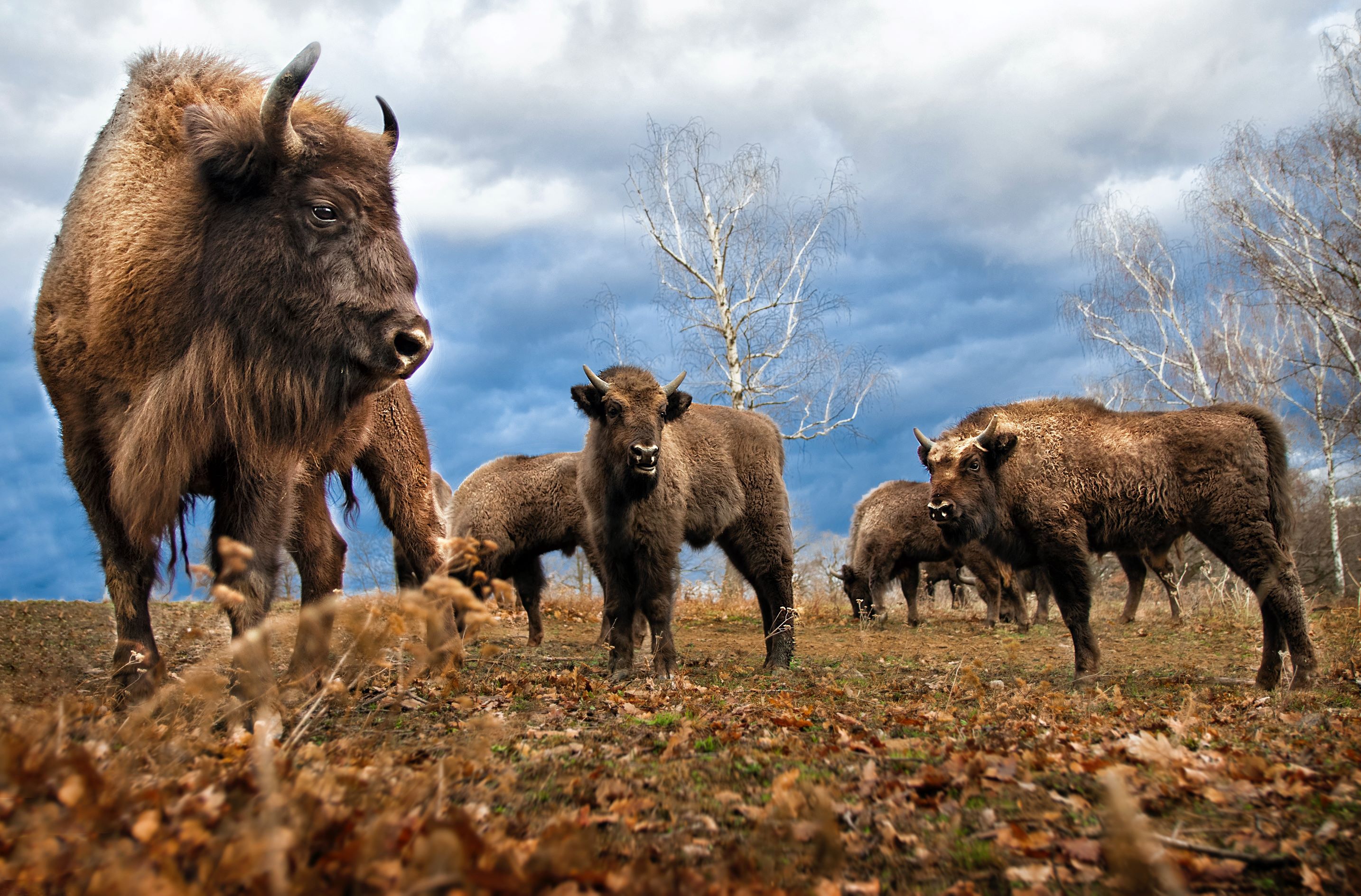You are viewing ARCHIVED content published online before January 20, 2025. Please note that this content is NOT UPDATED, and links may not work. Additionally, any previously issued diversity, equity, inclusion or gender-related guidance on this webpage should be considered rescinded.
Press Release
WASHINGTON – The Department of the Interior’s Office of the Assistant Secretary for Indian Affairs today announced $1.5 million from President Biden’s Investing in America agenda to support the restoration of bison populations and grassland ecosystems in Tribal communities. The funding will be divided between three Tribally led initiatives that aim to strengthen bison conservation and expansion, improved management of existing herds, and ecosystem restoration efforts in native grassland habitats. These investments also advance the Biden-Harris administration’s America the Beautiful Initiative.
“Bison are vitally important culturally, economically, and ecologically. These investments from the President’s Investing in America agenda support our efforts to revitalize Tribal cultures and communities and help conserve and restore important ecosystems that benefit all Americans,” said Assistant Secretary for Indian Affairs, Bryan Newland. “This exemplifies the Biden-Harris administration's dedication to building a more resilient and sustainable future for Tribal nations and all Americans.”
Bison are a keystone species that plays a crucial role in maintaining the ecological balance of diverse landscapes, while also supporting economic development and Indigenous food sovereignty and security. The projects will focus on habitat restoration, genetic diversity preservation, and the expansion of bison populations in collaboration with Indigenous communities utilizing Indigenous Knowledge.
Today’s announcement will help advance bison restoration efforts, which can enhance soil development, restore native plants and wildlife, and promote carbon sequestration, providing benefits for agriculture, outdoor recreation, and Tribes.
The funding, provided through the Bipartisan Infrastructure Law, is part of the Department’s Grasslands Keystone Initiative, unveiled as part of a Restoration and Resilience Framework that is guiding $2 billion in investments from the Bipartisan Infrastructure Law and Inflation Reduction Act to restore lands and waters and advance climate resilience. The Framework also includes a commitment to restoring core sage brush areas across Western States and into Alaska where bison once thrived.
Today’s announcement also advances the Biden-Harris administration’s respect for Tribal sovereignty and commitment to ushering in the next era of federal policies that support Tribal self-determination, as reaffirmed in President Biden’s new Executive Order 14112, on Reforming Federal Funding and Support for Tribal Nations to Better Embrace Our Trust Responsibilities and Promote the Next Era of Tribal Self-Determination.
Recognizing and including Indigenous Knowledge in federal research, policy, and decision making is an important policy objective of the Biden-Harris administration. For more information see White House Releases First-of-a-Kind Indigenous Knowledge Guidance for Federal Agencies | CEQ | The White House.
Bison Heard Expansion Projects:
Cheyenne and Arapaho Tribes, Oklahoma
Cheyenne and Arapaho Bison Expansion Project: The project aims to enhance the existing bison herd of around 650 by doubling the pasture area on Tribal lands, addressing infrastructure needs, and incorporating climate-smart practices. The project will increase herd size, improve ecosystem health, and explore a market for bison products resulting in ecological restoration, cultural preservation, and economic development in Northwest Oklahoma.
Three Affiliated Tribes of the Fort Berthold Reservation, North Dakota
Hans Creek Bison Company Expansion and Ecological Restoration: The project focuses on expanding the Twin Buttes Hans Creek bison range by building a 10,000-acre pasture on Tribal lands to support the expansion of the existing 250-head bison herd. Expansion would allow an increase in capacity of up to 4,000 bison. The program, rooted in Indigenous values, seeks ecological restoration by rewilding, acknowledging the critical role of large-scale bison herds in maintaining ecosystem health. Indian Affairs will provide funding for fencing materials to complete the pasture expansion, supporting spiritual and cultural beliefs of the Nueta while also supporting sustainable bison management practices.
Shoshone-Bannock Tribes of the Fort Hall Reservation, Idaho
The project seeks to reintroduce buffalo on traditional grazing lands, enhancing food and economic sovereignty for the Shoshone-Bannock Tribes. With a current buffalo count of 465, the project aims to expand the herd to 1,100 by introduction of additional buffalo, fostering cultural significance, employment opportunities, and economic gain. The project aligns with goals of environmental resilience and mitigating climate change impacts through soil health management. Indian Affairs funding will support infrastructure for animal control, management, and public safety by repairing or replacing fencing and watering systems.
American bison once numbered 60 million in North America, with the population anchored in what is now the central United States. Many Indigenous cultures, especially in areas where the species was most abundant, developed strong ties with bison and relied upon them for sustenance, shelter, and cultural and religious practices.
In the 19th century, bison were nearly driven to extinction through uncontrolled hunting and a U.S. policy of eradication tied to intentional harm against and control of Tribes. By 1889, only a few hundred wild bison remained. The persecution of bison contributed to the decline of healthy grassland ecosystems and, eventually, to the Dust Bowl in the 1930s. The loss of the keystone species, coupled with land conversion, led to declines of other important grassland wildlife, such as migratory birds and pollinators.
The Assistant Secretary for Indian Affairs advises the Secretary of the Interior on Indian Affairs policy issues; communicates policy to and oversees the programs of the Bureau of Indian Affairs, the Bureau of Indian Education, and the Bureau of Trust Funds Administration; provides leadership in consultations with Tribes; and serves as the DOI official for intra- and inter-departmental coordination and liaison within the Executive Branch on matters concerning American Indians and Alaska Natives and the federally recognized Tribes in the United States.
# # # #

Contact Us
Washington, DC 20240
Open 8:30 a.m.–4:30 p.m., Monday–Friday.
newsmedia@bia.gov


